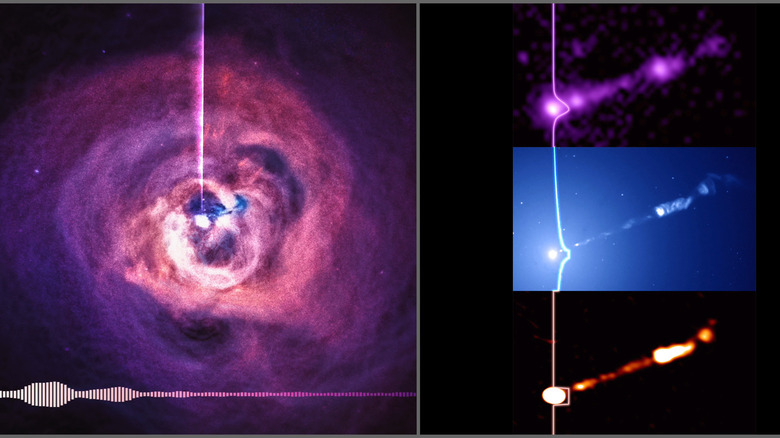You Can Hear A Black Hole With These NASA Sonifications
Black holes absorb everything that comes close to them, including matter, light, and sound. So a black hole doesn't sound like anything – right? In this case, you can "hear" the black hole thanks to two new sonifications from NASA's Chandra X-Ray Observatory. Sonifications take data from astronomical objects –- in this case, two famous black holes –- and turn them into sounds, for a new way to experience the wonders of space.
The two black holes in question include one at the center of galaxy Messier 87, which is famous for being the first black hole ever imaged thanks to the Event Horizon Telescope project, and one at the center of the Perseus Galaxy Cluster, which is famous because it sends out pressure waves through the gas around it that could be translated to a sound, albeit a very low pitched one, at 57 octaves below middle C.
To create the sonification for the Perseus black hole, the NASA researchers used this sound in the sonification, though they had to scale it up considerably to make it audible to humans –- at 144 quadrillion and 288 quadrillion times higher than reality (via Chandra). They used X-ray data of emissions around the black hole, which is scanned in a radar-like motion going round clockwise, with the X-ray waves translated into sound. These X-rays were originally captured by the Chandra X-ray Observatory as part of its research into Perseus and how the black hole interacts with the cluster around it.
The famous black hole Messier 87
For the sonification of the black hole at the heart of Messier 87, the Chandra team did not use the data from the famous Event Horizon Telescope project. Instead, they used data from other telescopes like Chandra, the Hubble Space Telescope, and the Atacama Large Millimeter Array in Chile, which observed the black hole on a wider scale (via Chandra). Combining this data shows the black hole in the X-ray, visible light, and radio wave wavelengths. And these different wavelengths have been translated to the lowest, medium, and highest tones respectively.
All three wavelengths are shown in the visual accompanying the sonification. The brightest part of the visual, which is the loudest part of the sonification, is the black hole itself, out of which a jet of energetic material is flowing. These jets are created when material like dust or gas falls into the black hole and some of the material is ejected out at great speeds.
Chandra scientists like Visualization Lead Scientist Kimberly Arcand say that they created the sonifications to enable blink or low-vision people to be able to enjoy the wonders of space, by portraying scientific data in an accurate but accessible way. In addition, they have been popular with students and adults as a way to engage the public in space research –- especially for an instrument like Chandra, which captures data in a wavelength invisible to the human eye.
